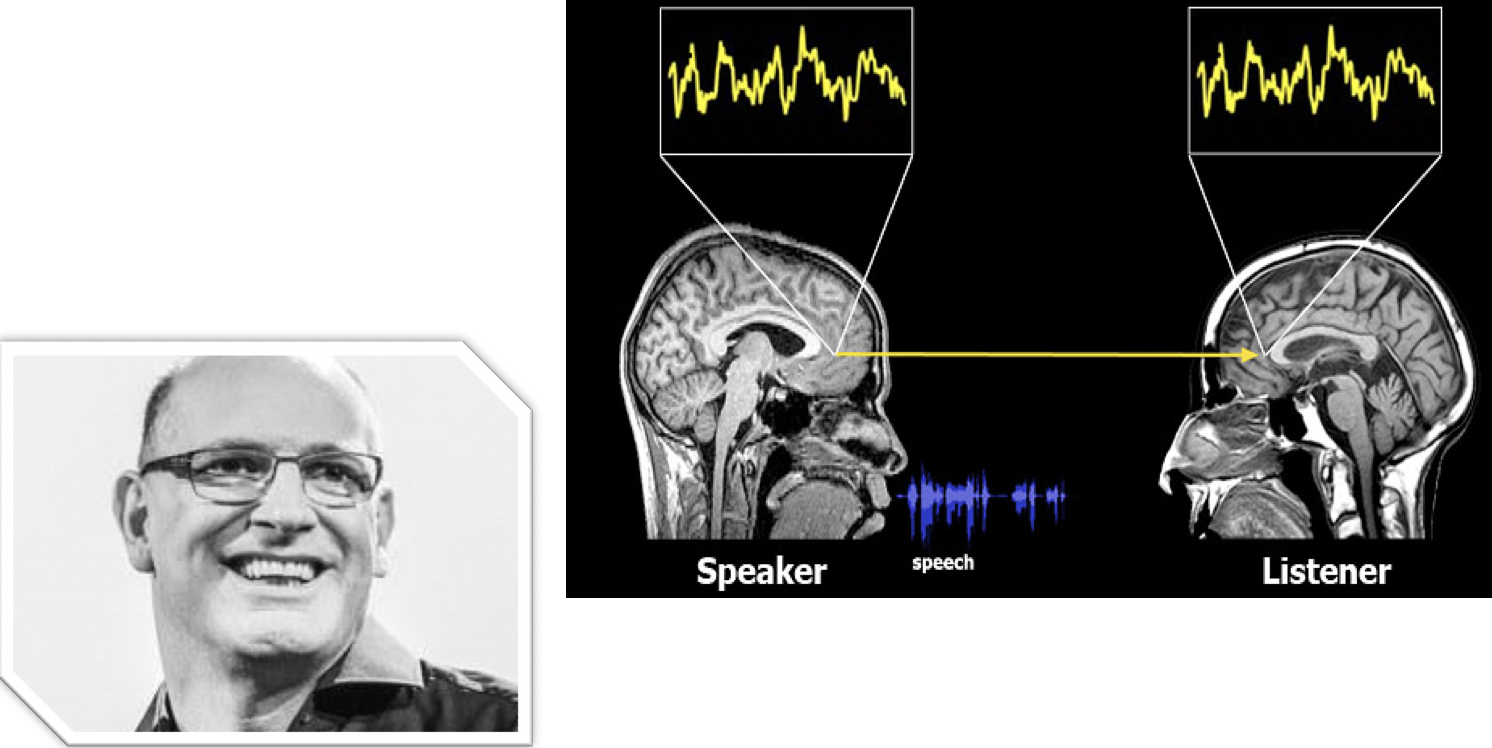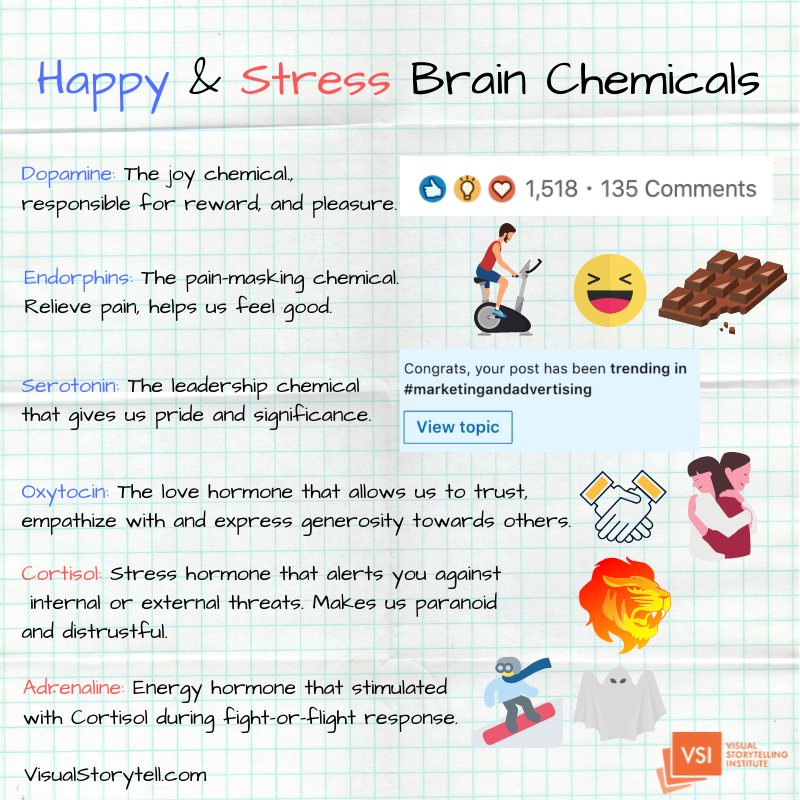
Why do we love stories?
Why do we love stories? https://www.visualstorytell.com/wp-content/uploads/2018/12/why_we_love_stories_thumb.jpg 370 218 Shlomi Ron Shlomi Ron https://secure.gravatar.com/avatar/995c0cf093380b90c7704fda398c9addf4e5c605afbc92af5c3f01f67d65aa41?s=96&d=mm&r=g
People love to tell stories but have you ever wondered why?
From the time cavemen sat around campfires and told stories about a challenging bear hunt or a fishing adventure – stories offered an effective mechanism for knowledge transfer. From this perspective, the campfire was the social media platform of the day that congregated all community members to engage in an in-person information exchange. And that’s how communities developed shared identities and cultures.
Yes, likes, comments, and shares to stories were all done verbally 🙂
As time passed, these campfire stories were transformed into legends that were passed from one generation to the next. Today, the new campfire is Netflix or YouTube we use to get entertained with a good movie or snackable video clips.
Our attention span has much more choices and it would be incorrect to say it’s shrinking. For example, depending on my mindset I choose to either binge on a 3-episode Netflix original series or get updated about news of the day through a comic filter of the The Daily Show clips on YouTube.
The campfire served as the ultimate social platform for exchanging stories.
The content selection is rich and it’s just a matter of context and mood that dictate the length of attention we’re willing to allocate.
The historic role of stories as information containers is one aspect of why we love stories. But when you dig deeper what is the secret formula that makes stories so powerful. You’ll find a timeless recipe that is baked into any story.
The power of storytelling whether it’s a movie, political campaign or an explainer video, is built on the timeless three-act story structure: 1) Setting (introduce the character, time and location, disruptive action), 2) Conflict (what dragons the hero battles along the way) and 3) Resolution (outcome describing if our hero won or lost.).
The sequence could vary but these three ingredients are a must-have for any good story.
 Psychology researcher Uri Hasson and his team scientifically demonstrated the power of stories
Psychology researcher Uri Hasson and his team scientifically demonstrated the power of stories
Another great evidence why we love stories came from Psychology researcher Uri Hasson at Princeton University. Professor Hasson and his team have shown that during a storytelling experiment the storyteller’s brain activity can actually be mirrored in the listeners’ minds – a phenomenon he coined as Neural Coupling.
In this study, volunteers listened to a 15-minute audio recording of an emotional story of high school prom while their brains were imaged by fMRI. Next, listeners took a test on story comprehension and recall ability. After the listeners’ fMRI data was mapped to the storyteller’s own fMRI, those listeners who scored highest on story comprehension also showed the closest neural coupling to the speaker. Top listeners synchronize with the speaker and even anticipate thoughts This implies that people understand each other by mirroring each other’s brain responses
This is critical!
Because it demonstrates that part of the reason why we love stories has to do with their unique capability to mentally teleport us to the world depicted in the story. When we read words that describe emotions, feelings, colors or odors the same region in our brain is activated as if we would smell that particular odor in real life.
This unique ability to mentally reenact stories we all possess is further explored by Paul Zak, a professor of economics, psychology, and management at Claremont Graduate University who discovered a neurochemical called oxytocin. In his words “Oxytocin is produced when we are trusted or shown kindness, and it motivates cooperation with others. It does this by enhancing the sense of empathy, our ability to experience others’ emotions. Empathy is important for social creatures because it allows us to understand how others are likely to react to a situation, including those with whom we work.”
Professor Paul Zak discovered a neurochemical called oxytocin
that is responsible for empathy, trust, and kindness
Professor Paul Zak in his research run narrative videos to subjected tested oxytocin levels before and after watching the videos. He found that oxytocin is released in the brain with character-based stories and with tension. This tension could revolve around your customer’ pain points and the more details you provide around this challenge the more empathy your audience will experience.
Triggering the right brain chemicals
When you’re looking to create a compelling story in support of your brand narrative, another way to think about it is to ensure your story structure triggers the right brain chemicals to achieve an optimal result. The role of emotions, and their sequence in a story also play a key role. Especially, when your story is destined at the top of the funnel where audience’s attention span is narrow. A strong jolt of emotions to trigger Dopamine right in the beginning of your story is essential. And don’t forget including a meaningful conflict in your story to trigger Cortisol. Depending on your story’s goals, your narrative strategy will change.
Great stories trigger happy and stress brain chemicals.
Granted, this is not an exact science and I am not saying this information will provide you with the secret combination to unlock your customer’s “Engagement Safe” – every time.
As we all know, human behavior is much more complex. There are also internal and external factors at play that either detract or help to build trust, empathy, and action.
Your research will help you capture a more accurate picture of your customer’s world.
So to summarize we love stories because they are engaging instruments that deliver information beyond flat stats and facts. You can spot them in regular conversation when they prefaced with the short “for example” or longer version “let me tell you a story…” In addition, stories have this unique capability to drive empathy through Neural Coupling and the release of oxytocin in the brain.
So when you’re thinking about your visual storytelling strategy, it’s important to first closely research your ideal buyer personas and based on your findings, construct stories that have well-defined relatable characters, surprising tension around a business problem and a clear bridge to the resolution where your CTA lives. Plan your story with an eye on what part will trigger the right brain chemical. Once you have your story defined, you can spruce it up with a visual media format (e.g., image, video, infographics, AR, VR etc) that would make sense to your chosen distribution platform and last but not least, stages of your buyer’s journey.
Form, function, and timing are key!
If you follow these simple steps, chances are your audience will see themselves in your story, empathize, trust your message, and be more inclined to act on your call to action.
Need help in making your customers love your stories? Schedule a FREE conversation to inquire about our Visual Storytelling Workshop.
- Post Tags:
- neural coupling
- Oxytocin
- Posted In:
- Story Making
Shlomi Ron
Shlomi Ron is the founder and CEO of the Visual Storytelling Institute, a Miami-based think tank with a mission to bring the gospel of visual storytelling from the world of art to more human-centric and purpose-driven marketing. A digital marketing veteran with over 20 years of experience working both on the agency and brand sides for Fortune 100/500 brands such as Nokia, IBM, and American Express. He started VSI to combine his marketing expertise with his passion for visual stories stemming from his interests in classic Italian cinema and managing the estate of video art pioneer, Buky Schwartz. At VSI, he helps brands rise above the communication noise through visual storytelling consulting, training, and thought leadership. Select clients include Estée Lauder, Microsoft, and Cable & Wireless – to name a few. He currently teaches Brand Storytelling at the University of Miami’s Business School. Thought leader and speaker at key marketing conferences. He is also the host of the Visual Storytelling Today podcast, which ranks in the top 10 best business storytelling podcasts on the Web. His book: Total Acuity: Tales with Marketing Morals to Help You Create Richer Visual Brand Stories. Outside work, he is a nascent bread baker, The Moth fan, and longtime fedora wearer likely to jive with his classic Italian cinema interest.
All stories by: Shlomi Ron24 comments
-
-
Xander E. Perez
What type of content would you like to see more of in the future? Let us know in the comments!
-
Adalberto Rodriguez
Your blog is a true hidden gem on the internet. Your thoughtful analysis and engaging writing style set you apart from the crowd. Keep up the excellent work!HABANERO88
-
-
Willie V. Paul
This blog is a great resource for anyone looking to live a more mindful and intentional life Thank you for providing valuable advice and tips
-
Marianna Kynlee Breanna Montes
I have recommended this blog to all of my friends and family It’s rare to find such quality content these days!
-
Nordic IPTV
Experience our Nordic IPTV service and don’t miss any of the amazing moments. More than 30,000+ channels, movies, and series for all age groups. Say goodbye to traditional TV and embrace the future today! (4K, FHD, HD): Nordic IPTV
-
mobileip@icloud.com
What i do not realize is in fact how you are no longer actually much more well-favored than you might be right now. You’re very intelligent. You recognize thus considerably in relation to this topic, made me in my view believe it from numerous numerous angles. Its like men and women are not fascinated until it is one thing to do with Lady gaga! Your own stuffs excellent. All the time handle it up!
-
iptv south africa
Endless Entertainment With The #1 📺IPTV Provider 🌎 IPTV South Africa
-
Viking IPTV
Stream without interruption thanks to the BEST IPTV Pack’s anti-buffering and anti-freeze features, paired with incredible 4K image quality on any device, wherever you are : Viking IPTV
-
IPTV NORDIC
Discover the ultimate IPTV service with over 30,000 channels, movies, and series for everyone. Say goodbye to traditional TV and enjoy the future of entertainment today! (4K, FHD, HD) – Nordic IPTV
-
ott ocean iptv
Discover the ultimate IPTV service with over 30,000 channels, movies, and series for everyone. Say goodbye to traditional TV and enjoy the future of entertainment today! (4K, FHD, HD) – OTTOCEAN IPTV.
-
Josephine Chapman
What i don’t understood is in reality how you’re now not really a lot more smartly-favored than you might be now. You’re very intelligent. You understand therefore significantly in terms of this topic, produced me personally believe it from a lot of numerous angles. Its like women and men are not interested except it is one thing to accomplish with Woman gaga! Your own stuffs outstanding. Always care for it up!
-
Jermaine Ray
you are truly a just right webmaster. The site loading speed is incredible. It kind of feels that you’re doing any distinctive trick. In addition, The contents are masterwork. you have done a great activity in this matter!
-
Elbert Clark
you are truly a just right webmaster. The site loading speed is incredible. It kind of feels that you’re doing any distinctive trick. In addition, The contents are masterwork. you have done a great activity in this matter!
-
Elaine Gibson
hello!,I really like your writing so a lot! share we keep up a correspondence extra approximately your post on AOL? I need an expert in this house to unravel my problem. May be that is you! Taking a look ahead to see you.
-
Rodolfo Lawrence
What i do not realize is in fact how you are no longer actually much more well-favored than you might be right now. You’re very intelligent. You recognize thus considerably in relation to this topic, made me in my view believe it from numerous numerous angles. Its like men and women are not fascinated until it is one thing to do with Lady gaga! Your own stuffs excellent. All the time handle it up!
-
Kelley Riley
The kids learning through movement at http://www.JeevaJoy.com aligns with modern educational best practices.
-
Reese K. L. Beasley
Your blog has become my go-to source for inspiration and motivation Thank you for consistently delivering high-quality content
Leave a Reply Cancel Reply
This site uses Akismet to reduce spam. Learn how your comment data is processed.



Sylvia Aubrielle Montes
Thank you for the awesome content, it’s always appreciated